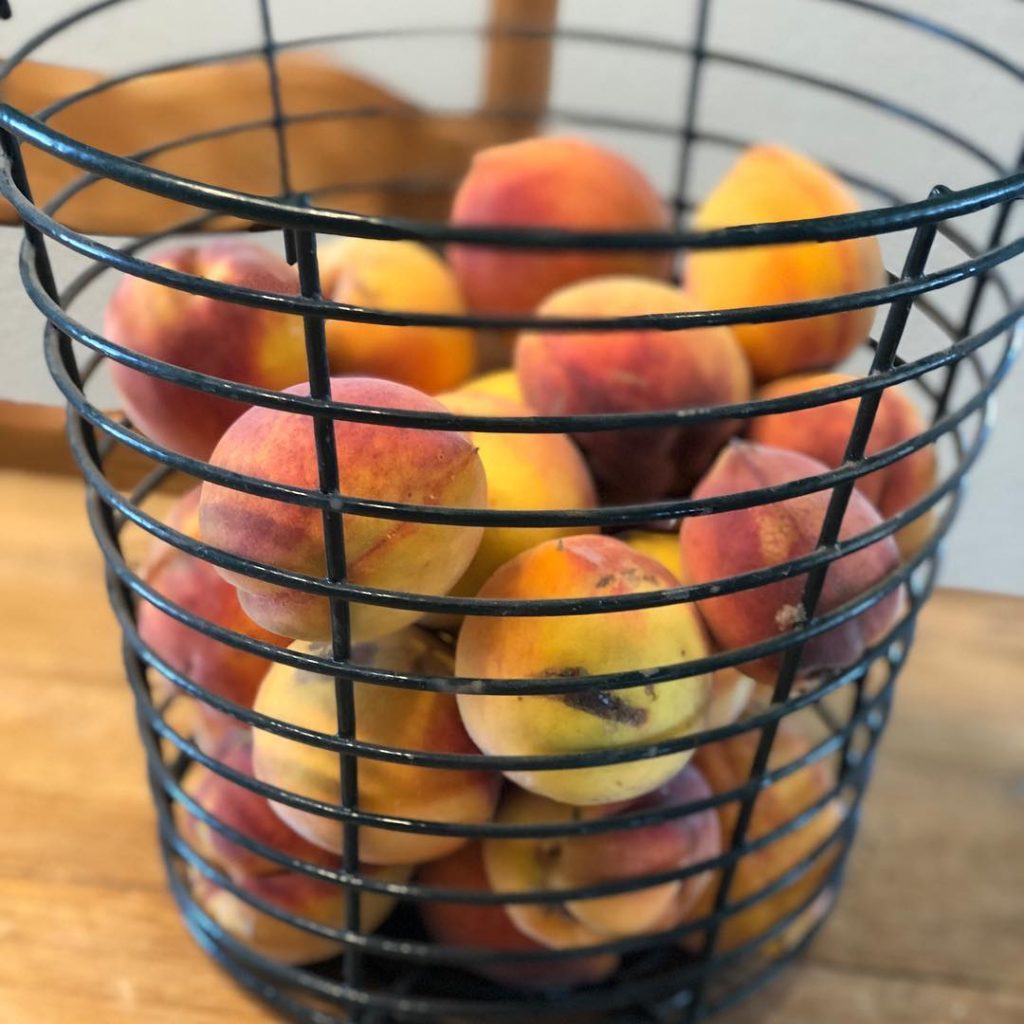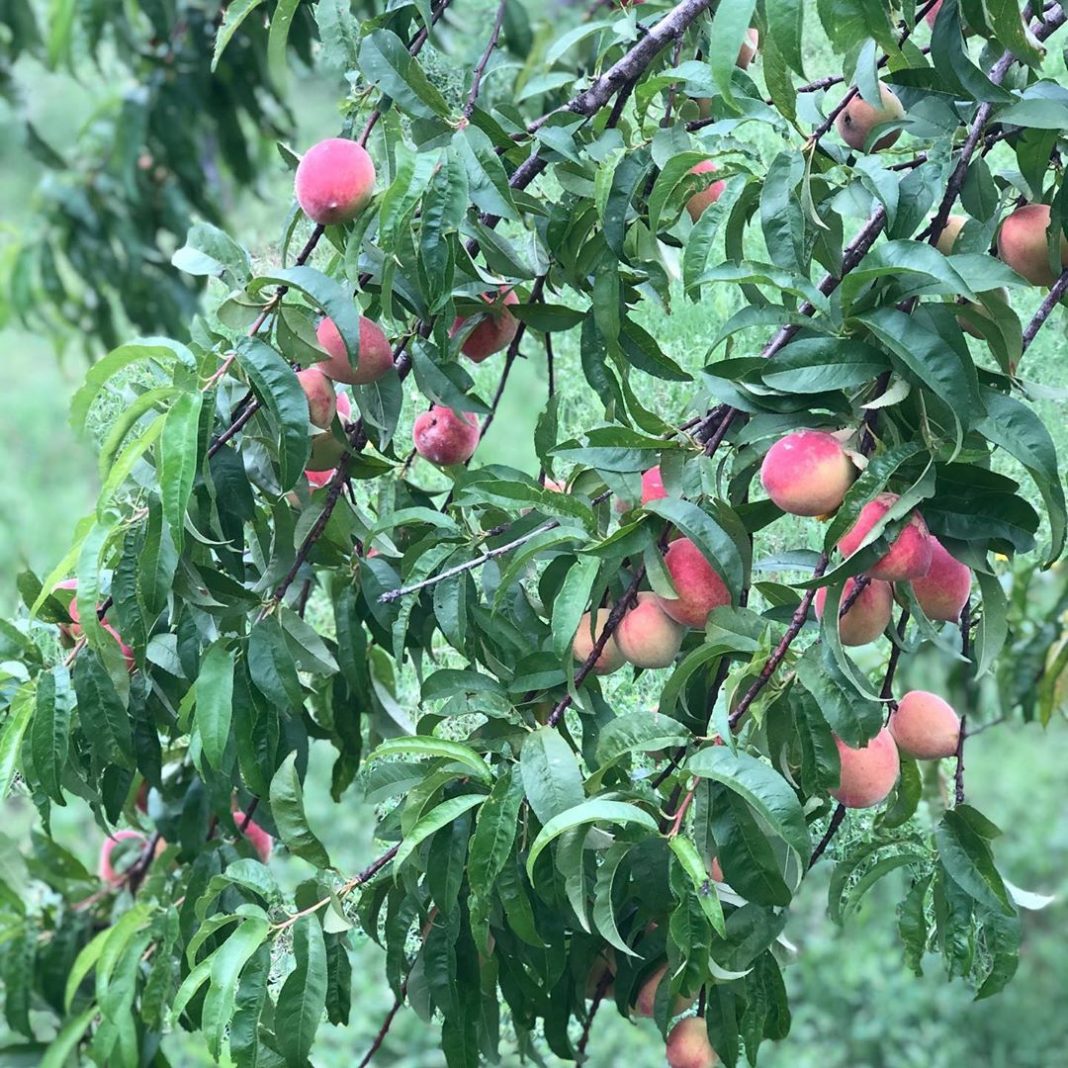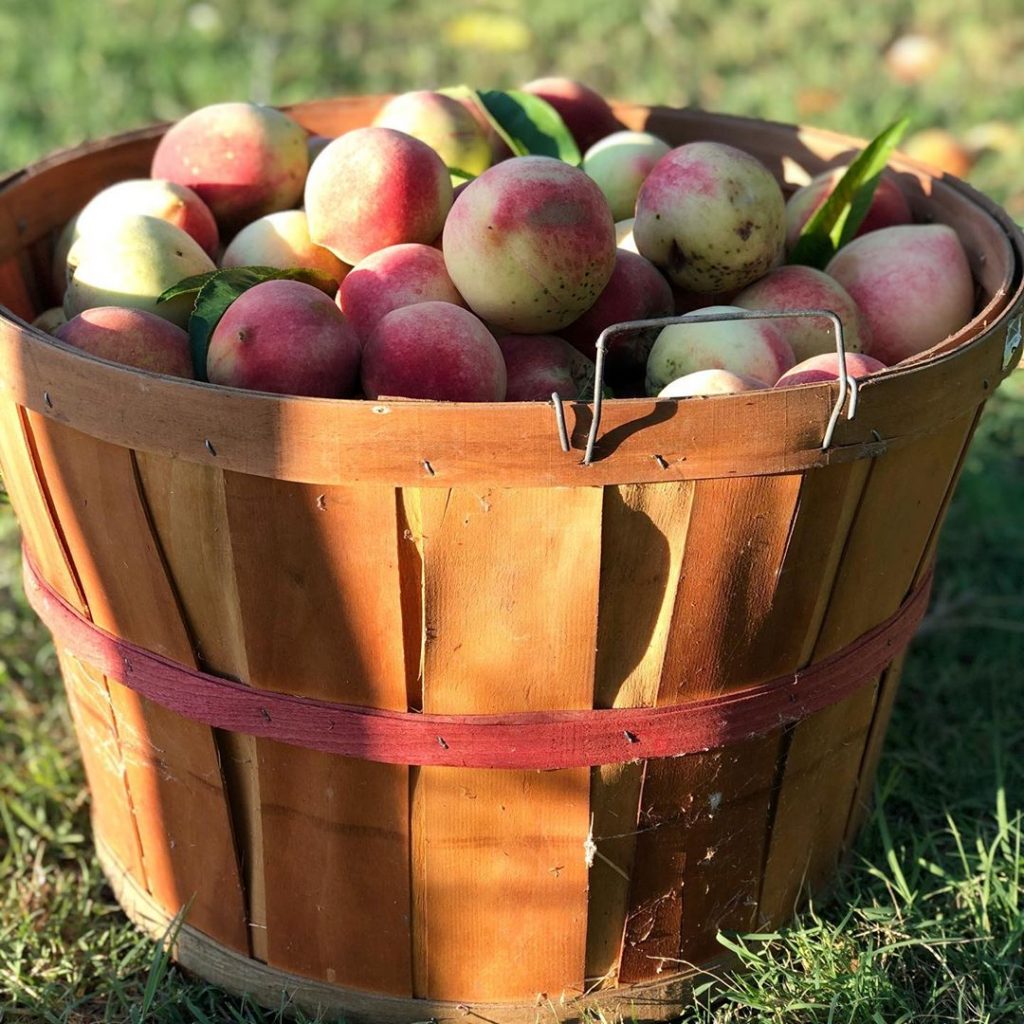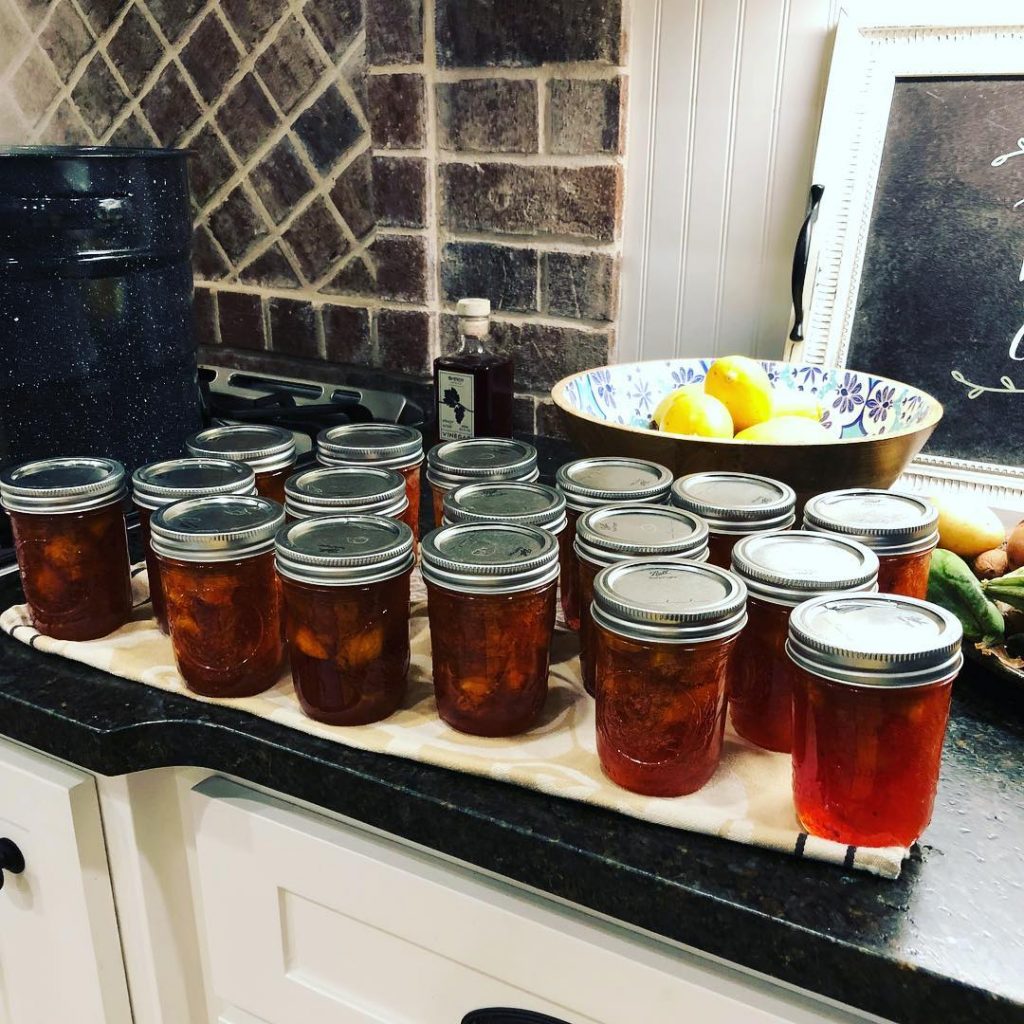The following essay is from How to Burn a Goat: Farming with the Philosophers by Scott H. Moore. Copyright © 2019 by Baylor University Press. Reprinted by arrangement with Baylor University Press. All rights reserved.
We have a small collection of fruit and nut trees on our farm. One day at work, I made a passing reference to our “orchards,” and a colleague teased me about my use of the word. “Moore, I hardly think ‘orchard’ is the right description of your trees.” He might have been right. “Orchard” is probably a little misleading, and “our orchards” is downright pretentious. However, several sites on the internet, that great storehouse of knowledge, claim that “five trees” is the minimum number of trees required for an orchard. If that’s the case, we make the cut. We have eleven mature, bearing pecan trees, and we’ve planted eighteen more grafted pecan saplings. We also have seven assorted varieties of bearing peach trees, two bearing olive trees, and a plum and a chestnut tree. And we have plans for lots more.
I’m happy to claim “orchard status” via internet confirmation, but I doubt there is a fixed number that makes an orchard. This is probably a version of the sorites paradox, better known as the fallacy of the “heap.” (If you have a heap of sand, and you start reducing it one grain of sand at a time, when will it no longer be a “heap”? A fixed number doesn’t make a heap.) But the number is not really that important. The presence of an orchard on a farm is a marker of more important matters. Orchards, perhaps more than any other feature of the farm, are a sign of the long-term planning, care, and attention required by a good farmer, and a mature orchard is evidence of many years of just that attention and care.
Every year we experiment with new varieties of vegetables in the gardens. Whether it’s a new kind of tomato, a different sort of squash, or the latest variety of green beans that the feedstore is recommending, we’ll try almost anything. Some of these work out and become new favorites. Lots of them wither and die in the Texas heat. Next year we’ll try something else. The stakes are pretty low. Trees, however, are a different matter. First, they are much more expensive, and most of us cannot afford to experiment with varieties that don’t have a good track record in this region. Even then we don’t always know what’s going to work in our soil. Second, planting any kind of tree, but especially fruit trees, requires lots of patience. In most cases it will be several years before the young sapling will begin to bear its fruit. Trees also require a lot more work. Depending on its age, size, and variety, it might require a very large hole (in ground that might have a lot of rock), a mulch bed, or a berm and stakes to protect it from the wind, or even some fencing wire to protect it from livestock. In the early years, it will require a lot (but not too much) watering. There are two obstacles here. First, sometimes the trees are a long way from the water source, and you will have to haul water to them (over and over again). Second, finding that mean of how much water is enough is not always easy. We have planted many, many trees that have not made it.

And once it does begin to bear, its care is only magnified. It will need to be pruned carefully since some branches will only bear fruit once. If the tree is a dwarf variety or small in stature, the weight of the fruit might seriously damage the tree, and its limbs may need to be supported by additional stakes and wires. In A Place on Earth, Wendell Berry describes Mat Feltner’s loving care of his orchard: “Feeling the limb on which the ladder is propped spring against his weight as he moves, Mat prunes the tree. He likes this work—the look of his hands moving and choosing, correcting, among the tangle of the branches. The orchard is one of the works of his life.”
Pruning is not easy work. It’s easy to get carried away and start cutting limbs that ought not to be cut. That’s why it’s better to use a handsaw or clippers for pruning fruit trees. The chain saw makes it all too easy, and when the work gets easy it starts to go fast. This is, of course, a blessing and a curse. The blessing part is easy: a chain saw can cut a lot of wood in a short period of time. But the curse follows in kind: because it’s so easy I start cutting everything I can reach. Sometimes I have found myself doing ridiculously stupid things—like standing under a limb I’m about to cut, or worse, standing on my tiptoes and, with the running chain saw held aloft in one hand, straining to reach just one more branch. Benjamin would remind me of the old Bill Engvall song “Here’s Your Sign.”
Since the handsaw requires hard work, it slows you down. It’s always best to capitalize on one’s essential laziness, and it’s much better to find yourself wondering which limbs MUST I cut rather than which ones CAN I cut. You can always go back and cut more, but when you’ve sawed off the limb that shouldn’t be pruned, there is no going back.
That’s why the presence of that mature orchard is such a sign of the longevity of the farm and the temperance and patience of its farmers. It just takes years and years of care to grow an orchard. In one of his essays, Czeslaw Milosz speaks of returning to the river valley of his birth and childhood in Lithuania. All of the small villages and farms, along with their barns, gardens, and orchards, had been cleared and replaced by huge fields for the Soviet collectivist agricultural endeavor. Milosz writes, “Among the many definitions of Communism, perhaps one would be the most apt: enemy of orchards. For the disappearance of villages and the remodeling of the terrain necessitated cutting down the orchards once surrounding every house and hut.” Milosz continues:
Orchards under Communism had no chance, but in all fairness let us concede that they are antique by their very nature. Only the passion of a gardener can delight in growing a great variety of trees, each pro- ducing a small crop of fruit whose taste pleases the gardener himself and a few connoisseurs. Market laws favor a few species that are easy to preserve and correspond to basic standards. In the orchards planted by my great-grandfather and renewed by his successors, I knew the kinds of apples and pears whose very names pronounced by me later sounded exotic.
I want to have the passion of that gardener that Milosz describes. We have certainly had the delight. Our best success with fruit trees has been with peaches. We have peach trees of several different varieties and ages (on account of the ones that have died and been replaced). This means that we have a relatively long season during which our peaches are ripening on the trees. We enjoy the fresh peaches over ice cream on hot summer evenings, and Andrea makes a lot of peach preserves. Eight pounds of peaches will give us eighteen to twenty jars of preserves, and because the trees are ripening at different times, we’re able to repeat this process two or three times over the summer.
And our pecans are even more productive. The individual trees will offer a pecan crop in different years, but we almost always get enough to give away bags and bags of both fresh shelled pecans and candied pecans at Christmas. We get the vast majority of the pecans “rough shelled” for us at a processing plant outside of town. This means we still have a lot of work to do to pick out excess pieces of pecan shell before they can be bagged or cooked. And by the end of the year, we often have an extra fifty to sixty pounds that never got shelled or candied. We sell those directly to the feedstore that posts the daily buy rate outside by the road.
So far we only have two olive trees, but we’ve been impressed with the small batch of olives they produce. For a number of years, I have been taking students to study in Greece and Turkey, and I marvel at the thousands of acres of olive groves we see there. Among my more ridiculous delusions is my dream of producing enough olives for us to have both a nice collection of olives in brine and enough to press for our own olive oil. It will obviously take many more trees than we currently have (but I know where we’re going to plant them).
There is another reward to growing a small orchard of fruit trees that only comes a couple of times a year. Imagine a hot summer day when you are mowing the grasses around the peach trees just as their fruit is becoming ripe. As you make several passes by and under the trees, you begin to inspect their offerings. “This tree is little bit behind that one.” “Those peaches on that upper limb are looking particularly good.” And then, perhaps drenched in sweat, with more than a little dust and grass clippings on your clothes, you make your selection, reach up, and pluck a prize peach straight from the tree as you drive by.
“Do I dare?” Yes, you do.















Thank you for sharing. This is good stuff. Tending to fruit trees forces you to think looooooong term. I find it most frustrating that you can find seemingly authoritative sources saying diametrically opposite things about how/when/what you should prune. But there’s nothing like a peach picked right off the tree.
I say that more than five trees is an orchard sounds fair. And more than 100 or so should be called a factory.
Comments are closed.